空间飞行器动力学与控制
- 格式:pdf
- 大小:2.93 MB
- 文档页数:31

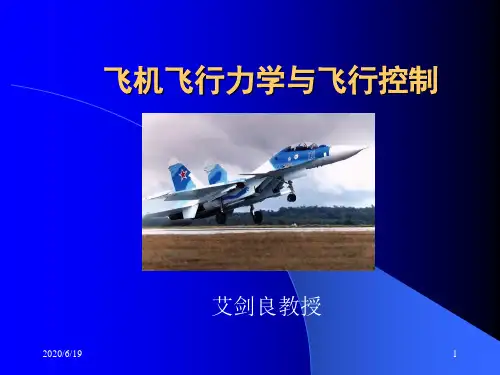
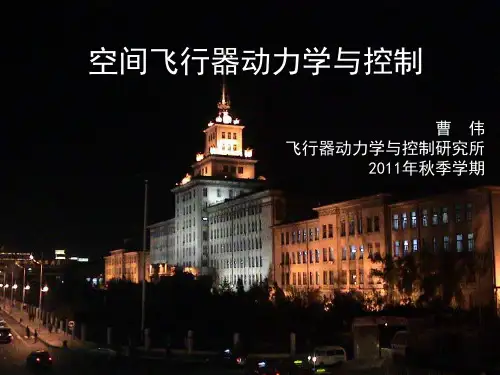


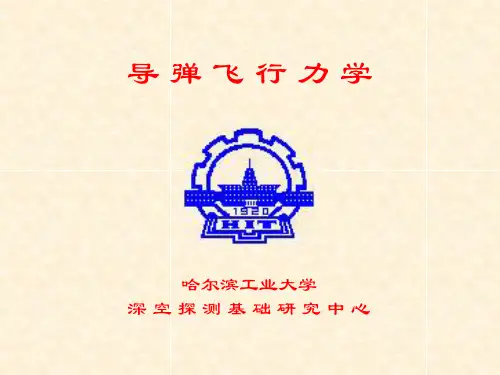
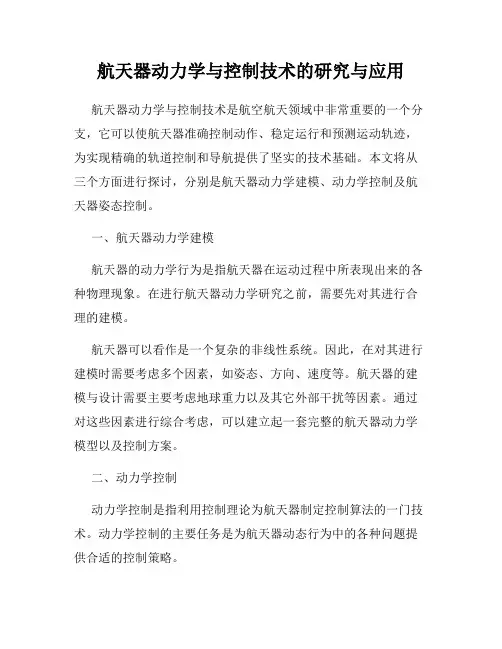
航天器动力学与控制技术的研究与应用航天器动力学与控制技术是航空航天领域中非常重要的一个分支,它可以使航天器准确控制动作、稳定运行和预测运动轨迹,为实现精确的轨道控制和导航提供了坚实的技术基础。
本文将从三个方面进行探讨,分别是航天器动力学建模、动力学控制及航天器姿态控制。
一、航天器动力学建模航天器的动力学行为是指航天器在运动过程中所表现出来的各种物理现象。
在进行航天器动力学研究之前,需要先对其进行合理的建模。
航天器可以看作是一个复杂的非线性系统。
因此,在对其进行建模时需要考虑多个因素,如姿态、方向、速度等。
航天器的建模与设计需要主要考虑地球重力以及其它外部干扰等因素。
通过对这些因素进行综合考虑,可以建立起一套完整的航天器动力学模型以及控制方案。
二、动力学控制动力学控制是指利用控制理论为航天器制定控制算法的一门技术。
动力学控制的主要任务是为航天器动态行为中的各种问题提供合适的控制策略。
动力学控制的技术手段主要包括PID控制、模型预测控制、自适应控制等。
其中,PID控制是一种广泛应用于动力学控制中的算法。
它通过比较实际状态和目标状态的偏差,调整控制量,使得航天器动态行为保持稳定。
自适应控制相比PID控制具有更好的自适应性能,可以适应不同的环境变化。
模型预测控制则采用了复杂的动力学模型来进行控制,使得航天器的控制策略更加准确和可靠。
三、航天器姿态控制航天器姿态控制是指对其方向、角度、陀螺仪等信息的实时监测和调整。
航天器姿态控制通常包括三个部分:姿态检测、姿态算法和姿态控制。
其中,姿态检测是指监测航天器当前的方向、角度、陀螺仪数据等信息。
姿态算法是根据航天器的姿态信息,计算出航天器当前的姿态角度。
姿态控制是根据计算出来的姿态角度,通过控制器进行反馈调节,以保证航天器的姿态保持稳定。
航天器姿态控制是航天器动力学和控制技术的重要组成部分,它对保证航天器的安全、稳定运行和准确控制具有至关重要的作用。
结语:航天器动力学与控制技术的研究与应用,不仅是航天器设计中必须掌握的技术,也是保证航天器精确轨迹控制和姿态控制的关键技术之一。

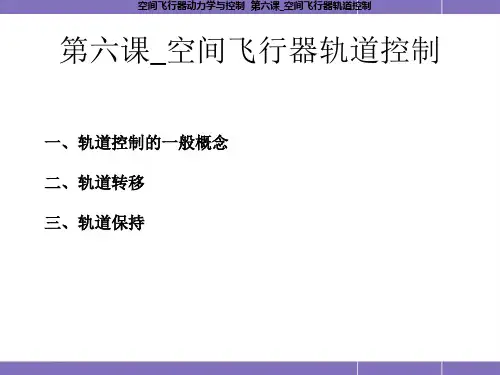
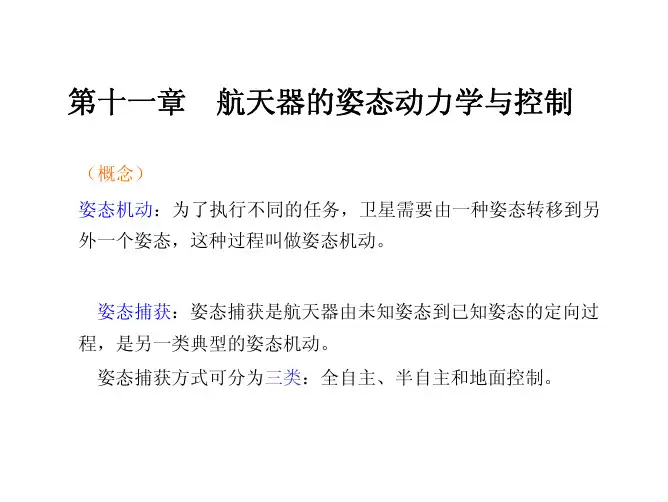
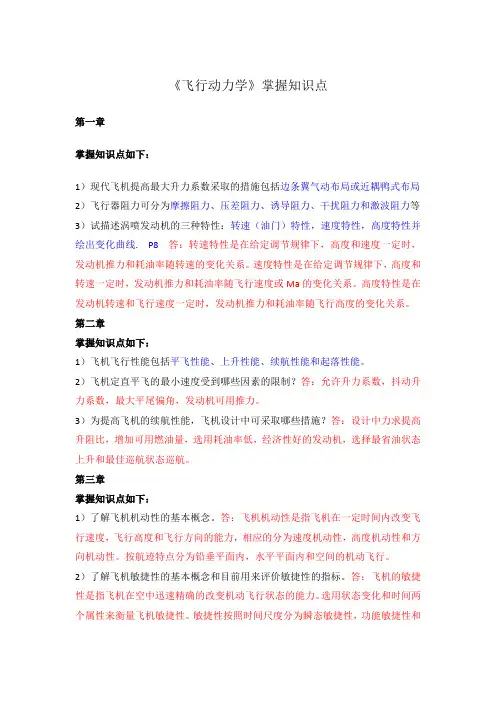
《飞行动力学》掌握知识点第一章掌握知识点如下:1)现代飞机提高最大升力系数采取的措施包括边条翼气动布局或近耦鸭式布局2)飞行器阻力可分为摩擦阻力、压差阻力、诱导阻力、干扰阻力和激波阻力等3)试描述涡喷发动机的三种特性:转速(油门)特性,速度特性,高度特性并绘出变化曲线. P8 答:转速特性是在给定调节规律下,高度和速度一定时,发动机推力和耗油率随转速的变化关系。
速度特性是在给定调节规律下,高度和转速一定时,发动机推力和耗油率随飞行速度或Ma的变化关系。
高度特性是在发动机转速和飞行速度一定时,发动机推力和耗油率随飞行高度的变化关系。
第二章掌握知识点如下:1)飞机飞行性能包括平飞性能、上升性能、续航性能和起落性能。
2)飞机定直平飞的最小速度受到哪些因素的限制?答:允许升力系数,抖动升力系数,最大平尾偏角,发动机可用推力。
3)为提高飞机的续航性能,飞机设计中可采取哪些措施?答:设计中力求提高升阻比,增加可用燃油量,选用耗油率低,经济性好的发动机,选择最省油状态上升和最佳巡航状态巡航。
第三章掌握知识点如下:1)了解飞机机动性的基本概念。
答:飞机机动性是指飞机在一定时间内改变飞行速度,飞行高度和飞行方向的能力,相应的分为速度机动性,高度机动性和方向机动性。
按航迹特点分为铅垂平面内,水平平面内和空间的机动飞行。
2)了解飞机敏捷性的基本概念和目前用来评价敏捷性的指标。
答:飞机的敏捷性是指飞机在空中迅速精确的改变机动飞行状态的能力。
选用状态变化和时间两个属性来衡量飞机敏捷性。
敏捷性按照时间尺度分为瞬态敏捷性,功能敏捷性和敏捷性潜力;按照飞机运动形式分为轴向敏捷性,纵向敏捷性和滚转敏捷性。
第四章掌握知识点如下:1)了解“方案飞行”和“飞行方案”的基本概念。
答:方案飞行是导弹按照某种固定的飞行程序飞行,用来攻击静止的或运动缓慢的目标,或将导弹及其他飞行器送到预定点。
飞行方案是设计弹道时所设定的某些运动参数随时间变化的规律。
第二章飞行力学基础2.1 飞行器空间运动的表示、飞行器操纵机构、稳定性和操纵性的概念2.1.1常用坐标系1)地面坐标系(地轴系)(Earth-surface reference frame)Sg-og xgygzg原点og 取自地面上某一点(例如飞机起飞点)。
ogxg轴处于地平面内并指向某方向(如指向飞行航线);og yg轴也在地平面内并指向右方;ogzg轴垂直地面指向地心。
坐标按右手定则规定,拇指代表og xg轴,食指代表ogyg轴,中指代表o g zg轴,如图2-1所示。
2)机体坐标系(体轴系)(Aircraft-body coordinate frame)Sb-oxyz 原点o取在飞机质心处,坐标与飞机固连。
Ox与飞机机身的设计轴线平行,且处于飞机对称平面内;oy轴垂直于飞机对称平面指向右方;oz轴在飞机对称平面内;且垂直于ox轴指向下方(参看图2.1-1)。
发动机推力一般按机体坐标系给出。
3)速度坐标系(Wind coordinate frame)Sa-oxa y aza速度坐标系也称气流坐标系。
原点取在飞机质心处,oxa轴与飞行速度V的方向一致。
一般情况下,V不一定在飞机对称平面内。
oza 轴在飞机对称面内垂x图2.1-1 机体坐标系与地面坐标系直于ox a 轴指向机腹。
oy a 轴垂直于x a oz a 轴平面指向右方,如图2.1-2所示。
作用在飞机上的气动力一般按速度坐标系给出。
4)航迹坐标系(Path coordinate frame)Sk-ox k y k z k原点取在飞机质心处,ox k 轴与飞机速度V 的方向一致。
oz k 轴在包含ox k 轴的铅垂面内,向下为正;oy k 轴垂直于x k oz k 轴平面指向右方。
研究飞行器的飞行轨迹时,采用航迹坐标系可使运动方程形式较简单。
2.1.2 飞机的运动参数 1)飞机的姿态角 1.俯仰角θ(Pitch angle)机体轴ox 与地平面间的夹角。
飞行动力学与控制大作业报告院(系)航空科学与工程学院专业名称飞行器设计学号学生姓名目录一.飞机本体动态特性计算分析.............. 错误!未定义书签。
飞机本体模型数据...................... 错误!未定义书签。
模态分析.............................. 错误!未定义书签。
传递函数.............................. 错误!未定义书签。
升降舵阶跃输入响应.................... 错误!未定义书签。
频率特性分析.......................... 错误!未定义书签。
短周期飞行品质分析.................... 错误!未定义书签。
二.改善飞行品质的控制器设计.............. 错误!未定义书签。
SAS控制率设计........................ 错误!未定义书签。
控制器参数选择........................ 错误!未定义书签。
数值仿真验证.......................... 错误!未定义书签。
CAS控制率设计........................ 错误!未定义书签。
三.基于现代控制理论的飞行控制设计方法.... 错误!未定义书签。
特征结构配置问题描述.................. 错误!未定义书签。
特征结构的可配置性.................... 错误!未定义书签。
系统模型.............................. 错误!未定义书签。
系统的特征结构配置设计................ 错误!未定义书签。
设计过程.............................. 错误!未定义书签。
具体的设计数据........................ 错误!未定义书签。
结果与分析............................ 错误!未定义书签。
Nanjing University of Aeronautics and Astronautics Spacecraft Dynamics and Control Teacher:Han-qing ZhangCollege of AstronauticsSpacecraft Dynamics and Control Text book:Spacecraft Dynamics andControl:A PracticalEngineering Approach/s/1o6BF32U(1) Wertz, J. R. Spacecraft Orbit and Attitude Systems, Springer. 2001(2) 刘墩.空间飞行器动力学,哈尔滨工业大学出版社,2003.(3) 章仁为.卫星轨道姿态动力学与控制,北京航空航天大学出版社,2006.(4) 基于MATLAB/Simulink的系统仿真技术与应用,清华大学出版社,2002。
2014年4月22日星期二Spacecraft Dynamics and ControlSpacecraft Dynamics and Control 1. IntroductionSpace technology is relatively young compared to other modern technologies, such as aircrafttechnology.In only forty years this novel domain hasachieved a tremendous level of complexity andsophistication. The reason for this is simplyexplained: most satellites, once in space, must rely heavily on the quality of their onboardinstrumentation and on the design ingenuity of the scientists and engineers.2014年4月22日星期二Spacecraft Dynamics and ControlSpacecraft Dynamics and Control The desire of humans to conquer space within the solar system will surely encourage newtechnological achievements that are not yetimagined.The technical fields in which satellites are used are numerous一telecommunications, scientificresearch, meteorology, and others.According to the specific task for which they are designed, satellites may be in orbits as low as200 km or as high as 40,000 km above the earth;other spacecraft leave the earth toward planets in the solar system2014年4月22日星期二Spacecraft Dynamics and ControlSpacecraft Dynamics and Control In October 4, 1957, the former Soviet Union sent the world's first artificial satellite into space.In March 11, 1960, the United States launcheda "pioneer" detector,and it was known as thefirst deep-space probe.2014年4月22日星期二Spacecraft Dynamics and Control2014年4月22日星期二Spacecraft Dynamics and ControlSpacecraft Dynamics and ControlIn April 12, 1961,the former SovietUnion successfullylaunched the firstmanned spacecraft. 尤里·加加林Spacecraft Dynamics and ControlIn March 1965, the former Soviet Union realized the first human spacewalk.“上升号”载人飞船2014年4月22日星期二Spacecraft Dynamics and ControlSpacecraft Dynamics and ControlIn January 1966, two spacecrafts completed the rendezvous and docking successfully for the first time in the former Soviet Union .“联盟号”飞船2014年4月22日星期二Spacecraft Dynamics and ControlSpacecraft Dynamics and ControlIn July 1969, the United States landed on the moon for the first time.N.A.阿姆斯特朗E.E.奥尔德林2014年4月22日星期二Spacecraft Dynamics and ControlSpacecraft Dynamics and ControlIn April 19, 1971, the first space station was built successfully with regard to the former Soviet.“和平号”轨道空间站2014年4月22日星期二Spacecraft Dynamics and ControlSpacecraft Dynamics and ControlIn April 1981, the first space shuttle had the successful test flight.“哥伦比亚号”航天飞机首飞记录片2014年4月22日星期二Spacecraft Dynamics and ControlSpacecraft Dynamics and ControlFengYun22014年4月22日星期二Spacecraft Dynamics and ControlSpacecraft Dynamics and Control北斗导航试验卫星定位原理图2014年4月22日星期二Spacecraft Dynamics and ControlSpacecraft Dynamics and Control Satellites may be very heavy: an inhabited space station, for example, could weigh severaltons or more. There also exist very light satellites, weighing 20 kg or less. Small satellites may berelatively cheap.Despite their differences, satellites possess fundamental features that are common to all. The physical laws that govern their motion in spaceand their dynamics are the same for all spacecraft.Hence, the fundamental technologies that evolved from these laws are common to all.2014年4月22日星期二Spacecraft Dynamics and ControlSpacecraft Dynamics and ControlA satellite's life begins with the specificbooster transferring it to some initial orbit,called a transfer orbit, in which the satellite is already circling the earth.For a satellite that will stay near earth, the next stage will be to "ameliorate" theorbit. This means that the satellite must bemaneuvered to reach the precise orbit forwhich the satellite was designed to fulfill its mission.2014年4月22日星期二Spacecraft Dynamics and ControlSpacecraft Dynamics and Control Next, the satellite's software must check for the proper functioning of itsinstrumentation and its performance inspace, as well as calibrate some of theinstruments before they can be used tocontrol the satellite.The final stage is the one for which the satellite was designed and manufactured.2014年4月22日星期二Spacecraft Dynamics and ControlSpacecraft Dynamics and Control Understanding the meaning of each stage will help one to understand the infrastructure of thecontrol system of any satellite.Throughout the text, the terms "satellite" and "spacecraft" (s/c for short) will be usedinterchangeably. The terms "geosynchronous"and "geostationary" will be used interchangeably to describe the orbit of a satellite whose period can be made exactly equal to the time it takes theearth to rotate once about its axis.2014年4月22日星期二Spacecraft Dynamics and ControlSpacecraft Dynamics and ControlA geosynchronous communications satellitewill be described in its different life stages. Acommon, medium-sized satellite is good example.Satellite of this type consist of the following main structural parts.(1) A central body consisting of a cubelikestructure.(2) Solar arrays extended in the N-S direction.(3) An antenna tower directed toward theearth.(4) Controllers(such as reaction thrusters)and attitude sensors(such as sun sensors).2014年4月22日星期二Spacecraft Dynamics and ControlSpacecraft Dynamics and ControlAttitude and orbit control systemThe attitude and orbit control system (AOCS) may include:(1) A reaction bipropellant (反应双组元)thrustsystem.(2) Two momentum wheels (one redundant).2014年4月22日星期二Spacecraft Dynamics and ControlSpacecraft Dynamics and Control(3) Two infrared horizon sensors. (one operating andone redundant)(4) Four fine sun sensors. (two redundant)(5)Twelve coarse sun sensors for safety reasons. (sixredundant)(6)Two three-axis coarse rate gyros(陀螺仪).(7)Two three-axis integrating gyros.2014年4月22日星期二Spacecraft Dynamics and ControlSpacecraft Dynamics and Control Much of the control hardware is redundant in order to guarantee a reliable control systemdespite potential hardware failures.2014年4月22日星期二Spacecraft Dynamics and ControlSpacecraft Dynamics and ControlMission sequenceSequence for injecting a satellite into the geostationary orbit.2014年4月22日星期二Spacecraft Dynamics and ControlSpacecraft Dynamics and ControlFirst is the launch into ageosynchronous transfer orbit(GTO).(地球同步转移轨道)withperigee and apogee (low and highaltitude) of 200 km and 35,786km, respectively.This is followed by the transferfrom GTO to geostationary orbit(GEO)(地球同步静止轨道),whereperigee and apogee both are35,786 km and the orbitinclination and eccentricity areclose to null.2014年4月22日星期二Spacecraft Dynamics and ControlSpacecraft Dynamics and ControlNext is the preparationand calibration of theAOCS.(姿态和轨道控制系统)GEO mission can start,followed by the actualGEO mission stage.2014年4月22日星期二Spacecraft Dynamics and ControlSpacecraft Dynamics and ControlAfter separation from the launcher, the satellite is commanded into a sun acquisition mode with the -X B axis pointing toward the sun. After completion of this stage, the solar panels are partially or fully deployed. If fully deployed, They can be rotated about their axis of rotation toward the sun in order to maximize power absorption.2014年4月22日星期二Spacecraft Dynamics and ControlSpacecraft Dynamics and ControlThe satellite stays in this cruise mode until the first apogee boost motor (ABM) orbit is approached. In the first and the subsequent ABM orbits, several hours before the ABM firing at the apogee, the gyros' calibration maneuvers are initiated.2014年4月22日星期二Spacecraft Dynamics and ControlSpacecraft Dynamics and ControlLess than an hour before any ABM firing, earth acquisition is initiated with the +Z B axis now pointed toward the earth, followed by preparation for the ABM firing stage.2014年4月22日星期二Spacecraft Dynamics and ControlSpacecraft Dynamics and ControlAfter ABM firings ranging from several to more than 30 minutes, the satellite is commanded to GTO cruise. After the last ABM firing, the satellite life is prepared for GEO operation.2014年4月22日星期二Spacecraft Dynamics and ControlSpacecraft Dynamics and ControlIn the first GEO, earth acquisition is performed, meaning that the +Z B axis of the satellite is directed toward the earth center of mass, thus allowing the normal GEO cruise.2014年4月22日星期二Spacecraft Dynamics and ControlSpacecraft Dynamics and ControlThe momentum wheel is spun to its nominal angular velocity to provide momentum bias attitude control. The orbit is then corrected for any remaining inaccuracies in inclination and eccentricity.2014年4月22日星期二Spacecraft Dynamics and ControlSpacecraft Dynamics and ControlThe satellite orbit dynamics and controlThe classical equations of motion of ideal Keplerian orbits.The basic orbital control concepts including control and station keeping of satellites.The attitude dynamics and controlThe basic equations of rotational motion about some axis through its center of mass.Single-and Dual-spin stabilization.The attitude stabilization and maneuvering ofspacecraft stabilized in three axes.2014年4月22日星期二Spacecraft Dynamics and Control。